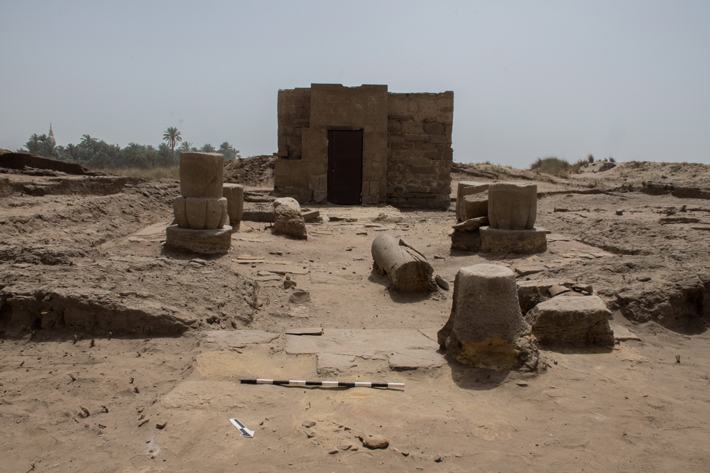https://www.archaeology.org/issues/304-1807/from-the-trenches/6698-trenches-egypt-luxor-karnak-osiris-chapel
By MARLEY BROWN
Friday, June 08, 2018

(Courtesy Essam Nagy/Egypt Exploration Society)
Relief (left) and column remains (right)
the temple complex of Karnak in Luxor, Egypt, are making sense of an out-of-the-way chapel devoted to the god Osiris. The remains of the Chapel of Osiris-Ptah Neb-ankh lie south of Karnak's Tenth Pylon and east of the famed avenue of ram-headed sphinxes. The structure is believed to have been built by the 25th Dynasty Kushite pharaohs Taharqa and Tantamani—who are represented on reliefs within the chapel—in the seventh century B.C., and was originally discovered by locals in the nineteenth century. Researchers have now mapped the building's entrance and foundations, and have uncovered a collection of clay pots and statue fragments. "Every king wanted the honor of making a mark on the great religious complex of Karnak," explains project director Essam Nagy of the Egypt Exploration Society. "The cult of Osiris had grown in importance, so the Kushite-period rulers built shrines and chapels at the site to reflect that."

(Courtesy Essam Nagy/Egypt Exploration Society)
Chapel of Osiris-Ptah Neb-ankh, Karnak, Luxor, Egypt
-- Sent from my Linux system.


No comments:
Post a Comment